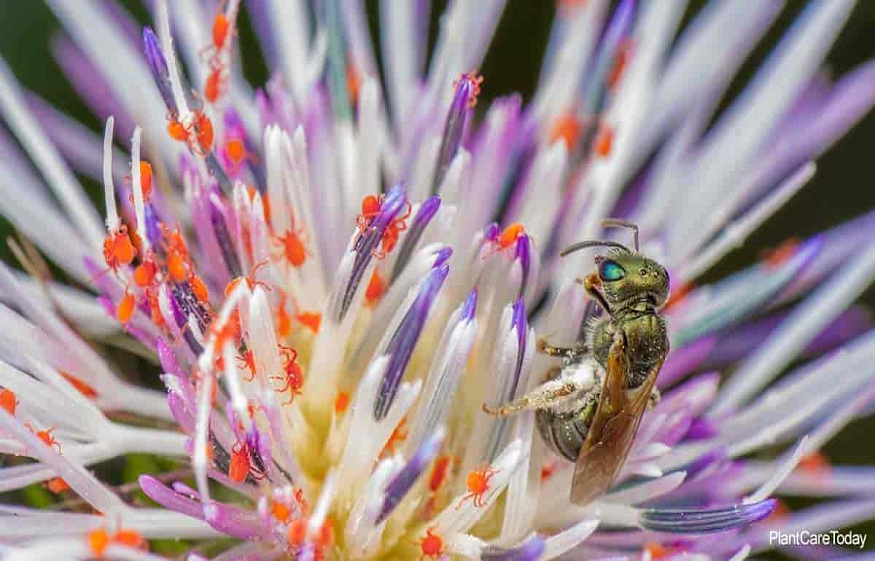Red Spider Mite Infestation is a highly contagious and often fatal pest of spiders. While you may think a simple spray or bath can remove mites from the spider, it’s important to act fast on this infestation because the mites will burrow deep into the spider’s body.
What are red spider mites?
Red spider mites are small, red spiders that feed on other insects. These mites are tiny, but they can cause a lot of damage in a short amount of time.
If you notice red spider mites on your plants, act fast! You can treat the infestation with a pesticide or natural treatment. Most spider mites that cause damage to plants will lay eggs; you can use physical and chemical controls to stop the spread of the infestation before it becomes too severe. The female red spider mite lays her egg sac onto leaves, stems, or other structures in your garden.
These tiny white eggs hatch into larvae between 2 and 6 days after they are laid. Once hatched, these larvae will look very similar to the adult mites you expect seeing on your plants. Red spiders are small but extremely hardy mites that can survive for long periods of time without food. They feed on a variety of insects including aphids, scales, mealy bugs, and thrips – which also make them a nuisance pest! Many plants are susceptible to attack by this microscopic pest.
The following plants are common garden pests: Chrysanthemum, Cosmos, Dahlia, Daffodil, Echinacea, Geranium, Iris, Impatiens, Peonies, Roses and Zinnias. As the red mite species has become more prevalent in the U.S., so have the symptoms related to their presence on your plants. Even though these tiny pests can’t be seen with the naked eye or even with a hand lens after they have infested your flowers or veggies; they feed on a wide range of insects and often leave behind damaged foliage which will exhibit symptoms such as yellowing and drying up. The damage caused by the feeding of these mites is most apparent when you look at the undersides of your plants leaves.
The damage to the leaves will be evident when you look at the bottom of the leaf for tiny holes or extra-small whitish spots that are almost like rice grains. These damage areas will turn into a yellow discoloring and infected areas will start to dry up and brown out.
What causes a red spider mite infestation?
Red spider mites are tiny arachnids that feed on the tissue of plants. When an infestation is detected, it’s important to act fast to prevent the spread of the pests. Here are six reasons why you should act fast on a red spider mite infestation:
- Red spider mites can spread quickly and cause serious damage to plants.
- They can cause leaves to turn yellow and fall off the plant, stunting growth and disrupting the flow of photosynthesis.
- The pests can also produce a sticky substance that can clog up irrigation systems and damage other plants in the vicinity.
- If left unchecked, an infestation of red spider mites can lead to a full-blown plant disease called red spider syndrome.
- Finally, red spider mites are known vectors for a number of plant viruses, including potato virus Y and tobacco mosaic virus. For more information about how to get rid of red spider mites and other common pests, visit the University of California’s Integrated Pest Management program or the UC Davis Plant Disease Diagnostic Center.
Where they are most likely to be found?
The red spider mite is most commonly found indoors in humid and warm environments, but it can also be found outdoors in warmer climates.
The red spider mite feeds on the webbing of spiders, and can cause severe damage to webbing, spiderlings, and even the adult spiders.
Red spider mites are especially destructive during the summer months when spider populations are highest.
How do you get rid of them?
There are a few ways to get rid of red spider mites. You can use a vacuum cleaner, broom and dustpan, or a hose with a sprinkler head. You can also use an insecticide that is safe for pets and children. You can also spray your plants with a mixture of dish soap and water, or a fungicide that is safe for pets and children. Spray your leaves and tops of plants. Spray them well, then wait at least 15 minutes before watering the plant. This will help kill any red spider mites that may be on the leaf or top of the plant. Spray them again two days later and wait another 15 minutes. If the number of red spider mites is still high, spray your plant with a pest control product designed for spiders and mites such as Adams’ Garden Pest Control Spider Mite Granules, which are safe for pets and children and effective against both red spider mites and other spider mites.
If you find red spider mites on a plant, don’t just remove them by hand. “Take a really good look at the life cycle of the mite and get to know as much as you possibly can about it,” advises Marjorie Greeman, extension horticulture agent with the University of Arkansas Cooperative Extension Service in Fayetteville.
You can learn much about red spider mites by studying their eggs, which are very tiny. Have a magnifying glass handy when looking at these eggs, Greeman suggests. Even if they appear to be clear and translucent (like honey), if you can see a light-coloured spot inside them, chances are good that egg is contaminated with an adult red spider mite.
Conclusion
You might be wondering what to do if you spot red spider mites on your property. Act fast! In cases where the infestation is severe, treatment may require the use of insecticides and/or fungicides, which can have negative effects on both humans and the environment. If you notice any unusual webbing or spots of yellowish-green pus on plants or trees, act quickly to get rid of these pests before they cause too much damage.

